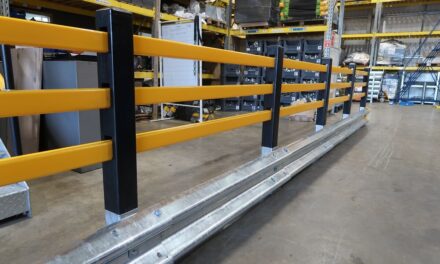Earlier this year OHSAS Standard 18001 was replaced by the European Standard ISO 45001. Neither of these standards are legal necessities, so what are the benefits of complying with them, above and beyond the statutory requirements? And what does it take to obtain accreditation?
Elfab, a manufacturing company headquartered in the North East, has been through the process to obtain OHSAS 18001 accreditation.
Here, their Health, Safety and Environment officer Howard Stafstrom talks candidly about the challenges of achieving the status and where the company has benefited from it: “Previously, Elfab’s health and safety policies were not always stored or communicated as consistently as they could be. With our strategic focus on investing in people, we identified a need to organise health and safety information systematically; achieving the OHSAS 18001 standard has helped us do that.
“However, preparing for the audit took a great deal of work. We had to write 60 procedures with agreed responsibilities and implementation instructions. We also trained staff in each of the procedures, and produced a number of associating standard forms and schedules, such as an agreed contractor list.”
The OHSAS 18001 audit at Elfab was a two-step process that took five days. The first step examined all the documentation, while the second checked the company’s practice followed the written procedures. Thankfully, Elfab passed the audits first time round. Mr Stafstrom attributes this success to the “excellent teamwork between the Health and Safety, maintenance and shopfloor teams, with strong support from office functions.”
Lessons learned
With such a stringent audit process, there were inevitably many challenges to be overcome. Mr Stafstrom’s advice to other companies considering accreditation is:
- Don’t expect to achieve accreditation overnight. Depending on the status of your current H&S Management System, you can expect it to take up to several months to bring existing documentation in line with the standard’s requirements. It will then take more time to fully implement the new procedures, so this should be factored in as well.
- Keep on top of the paperwork, from day-to-day and week-to-week. For example, we carry out monthly internal audits, with action points resulting from the findings. This keeps our records in good order for the six-monthly external audits.
Bottom line: Was it worth it?
Gaining accreditation is a long, paperwork-heavy process, requiring time and commitment from many different departments. So, is it worth the investment? Mr Stafstrom would say it absolutely is. The benefits he has seen at Elfab since gaining accreditation include: ‘improved productivity with reduced absenteeism and sickness, reduced costs from downtime and disruptions, and an ability to bid for a wider range of contracts. Finally, we will now find it significantly easier to switch over to the new ISO 45001 standard compared to starting from scratch.’
Choosing to achieve an internationally recognised Health and Safety Standard has not only brought short-term benefits but also placed the company in a strong position for complying with policy changes in the longer term.







